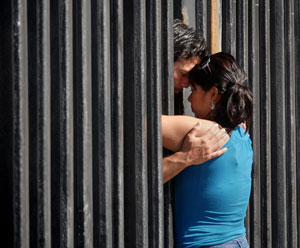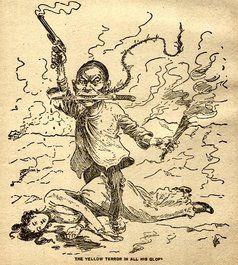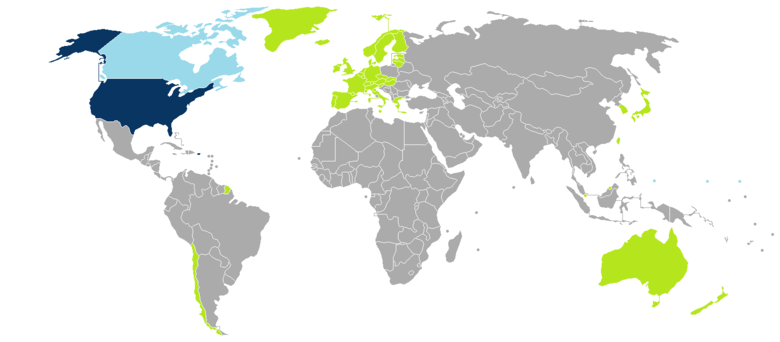There is a 19-year-old Filipino citizen who has literally lived her entire life in Singapore who, as of this writing, risks being kicked out of the only country she has ever called home:
Nadirah was born out of wedlock in Singapore and given a Filipino citizenship, as her mother was a Filipino. Along with her five siblings, two other siblings are also non-citizens while the other three siblings were given citizenship as her parents got officially married in Philippine before they were born.
…
As Nadirah graduates from ITE, she will soon be asked to return to Philippine once her student visa expires in a month’s time. To be relying on relatives whom she never spoken to for years and a country where she has no memory of, the situation looks utmost depressing for this young lady with a uncertain future.
Nadirah’s situation reminds me all too much of the “DREAMers” of the US –young people who are present in the US without lawful immigration status who have spent most, if not all, of their lives as law-abiding members of US society. The immigration laws of Singapore ought to give people like her relief: there’s an argument to be made that even if she doesn’t deserve citizenship, she certainly ought to be able to reside in the only country she’s ever called home.
But we ought to look beyond the specific issue of young people whose paper nationality does not match the nationality written on their hearts. There are plenty of older people who, whether or not they feel a sense of national belonging to another country, are productive and harmonious members of that country’s society.
My mother may provide a useful illustration: she is a Filipino citizen who resided in Malaysia with our family for several years on a renewable 1-year “social visit pass”: the Malaysian immigration authorities maintained this legal fiction that she was making a “social visit” to my father for an extended period of time. While this is certainly more favourable than how other immigration legal regimes treat families, it also meant my mother had no legal standing to work in the country (despite possessing a post-graduate degree in a STEM field) and risked deportation or being barred entry for fairly arbitrary reasons.
A real risk my family faced was that if my father died, there would be no legal fiction for her to remain on a “social visit” and force her to return to the Philippines (where she has not lived for decades). Moreover, the restrictions of the pass forced my parents to spend multiple working days every year processing the necessary red tape to renew my mother’s visa (a luxury which many less-educated, working-class families probably can’t afford), and deterred my mother from leaving the country (on one occasion, a bureaucratic error in her visa meant that she risked being unable to re-enter the country if she left, even for a brief visit — so she simply did not visit any friends or family in neighbouring Southeast Asian countries until the next year, when her visa was renewed and the error corrected).
In principle, my family could have obtained permanent residency for my mother. In practice, the immigration bureaucracy seemed content not to bother itself with her application. It’s going on 15 years since her application was first filed, and every single time we’ve checked on its status, we’ve been told: “Wait for a letter from us.” The last time my father visited a Malaysian immigration office to discuss this, he saw a white woman berating a civil servant. She had apparently married a Malaysian who had since died, which is probably why she was there at the office that day. She was shouting at the government clerk in fluent, well-accented Malay: “I have been living in this country for longer than you have been alive!”
(Of course, there’s always a story that can top any story you think of. If we are speaking of immigrants’ pulling rank based on seniority, I can only imagine what a Mr. Padilla, who had lived in the US for over 4 decades and fought for it in the Vietnam War, had to say when he received his deportation order.)
The way we think about immigration law assumes citizens must, more or less, live in the country of their nationality. If they live or develop ties elsewhere, they need to prioritise their loyalties and naturalise as necessary. The permanent residency systems of most countries assume that those holding permanent residency will eventually naturalise: I have heard of one Malaysian holding permanent residency in the UK who calls both the UK and Malaysia home being frustrated at the UK border when its immigration officers demand to know why she wants to come in (“because it’s my home!”).
Yet there is no reason to bind citizenship and residency together: even in the status quo we can simply define citizenship as membership in a polity, and residency as the right to reside there and submit to that polity’s laws. Perhaps Nadirah wouldn’t be satisfied without citizenship — she might have grounds for this, since it sounds like she has always thought of herself as a Singaporean. But she and her Singaporean friends and family would still find this arrangement a whole lot more palatable than the alternative, which is to expel her as a non-resident to a country that is just as foreign to her as it is to Lee Kuan Yew.
The very fact that some of Nadirah’s siblings are Singaporean citizens and some are not speaks volumes about the arbitrariness and ridiculousness of how immigration law treats human beings: the entire lives of people, and the communities they are embedded in, hinge on some pieces of paper. Whether it’s a birth certificate (God bless those lucky people whose foreign parents were rich enough to give birth to them in the US and entitle them to American citizenship) or a marriage certificate (which gave some of Nadirah’s siblings the legal imprimatur that she lacks), it serves as an entirely arbitrary division between people who, for all other intents and purposes, are identical.
If immigration policy prevents people who call a place their home — a home that their community recognises as theirs — from actually living in that home, then as a moral matter, immigration policy is wrong. Plain and simple. We recognise the moral truth of platitudes like “Home is where the heart is.” We may sing paeans to the importance of community and how that defines the space we call home. But when home is on the line for members of our communities who, by an accident of birth, don’t have the legal right to live in their own home, do we have the moral courage to change the laws which make a mockery of the concepts of home, family, and community?




